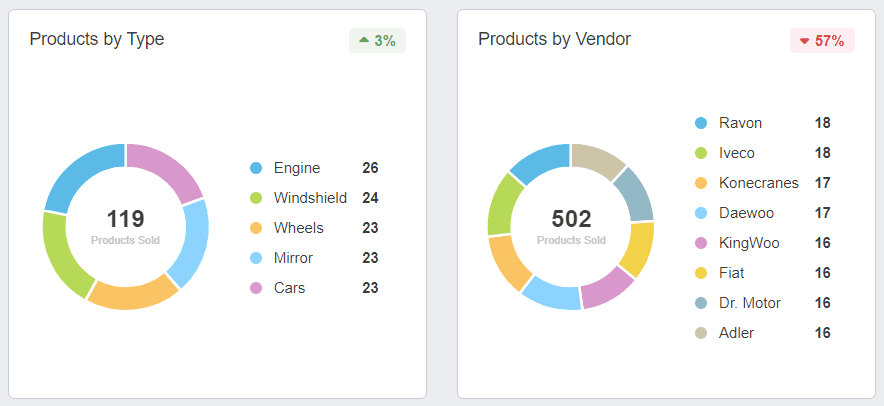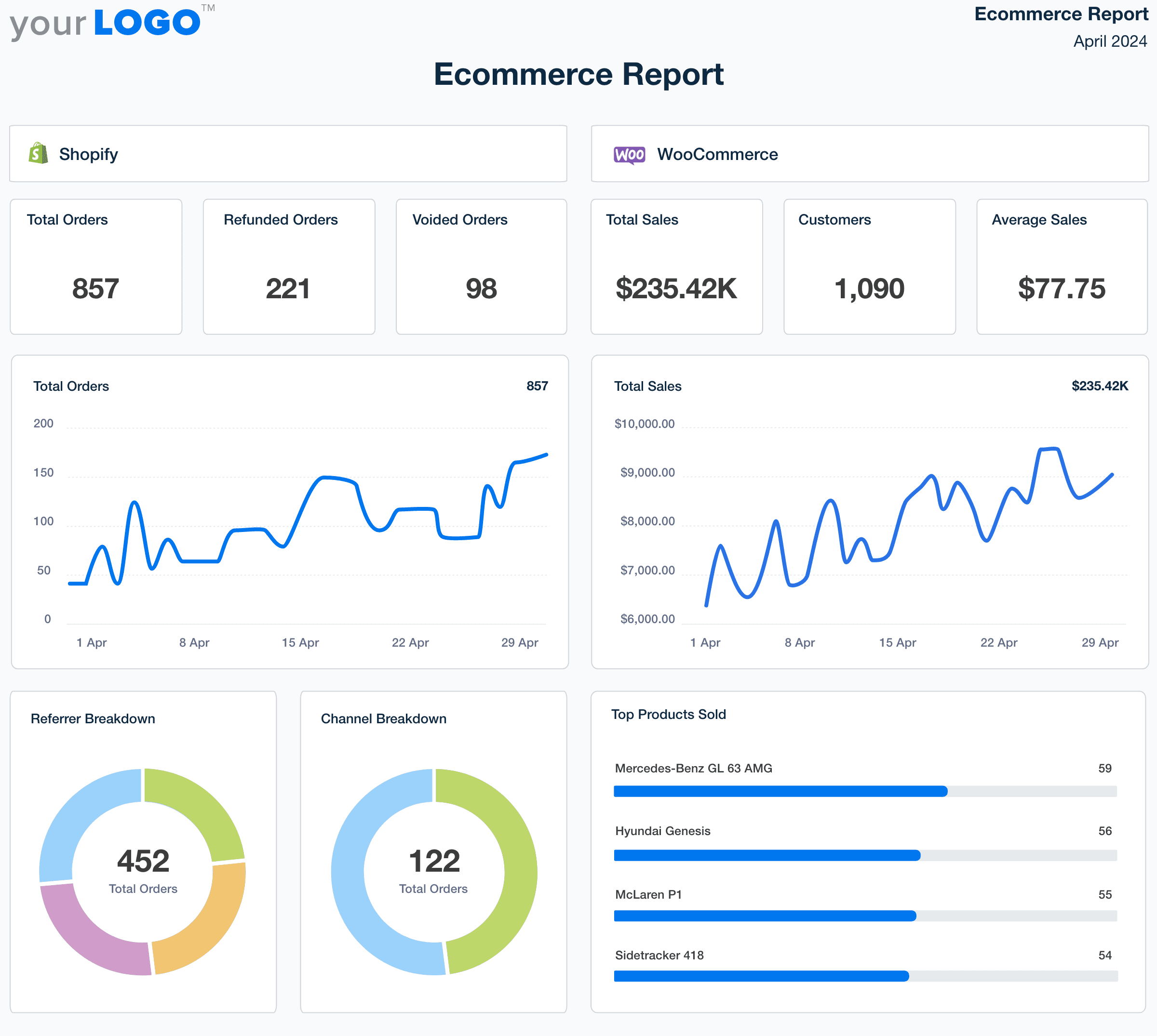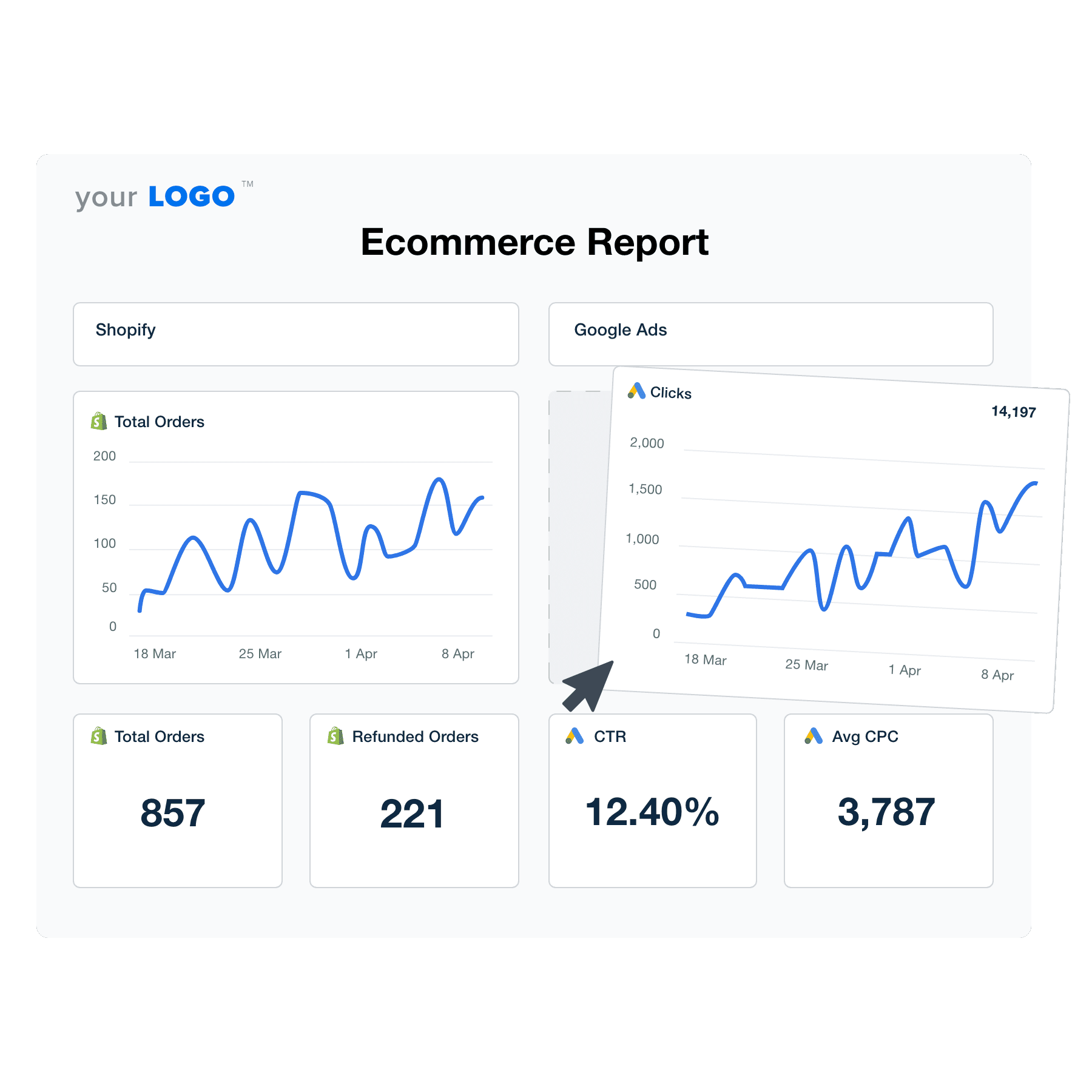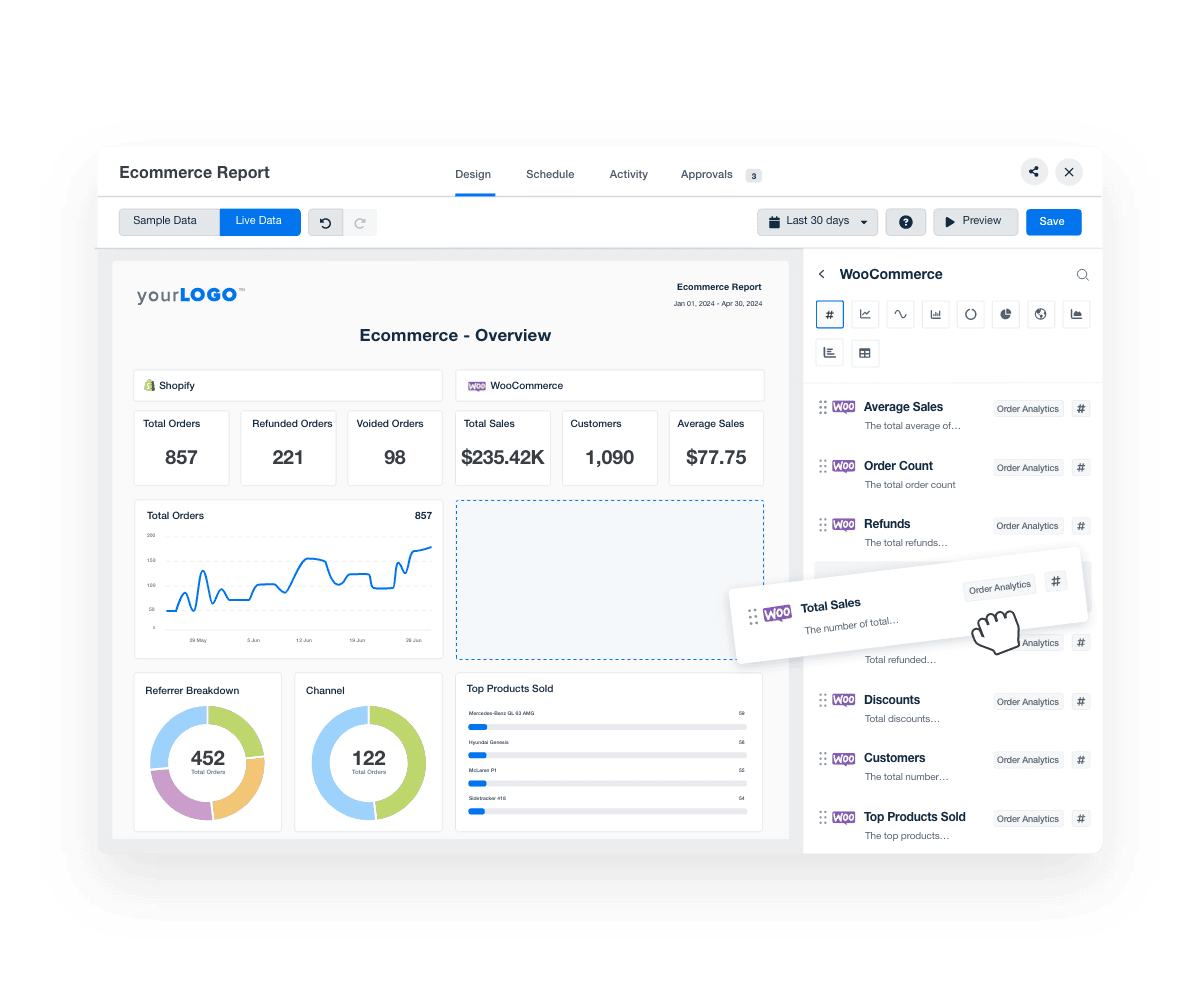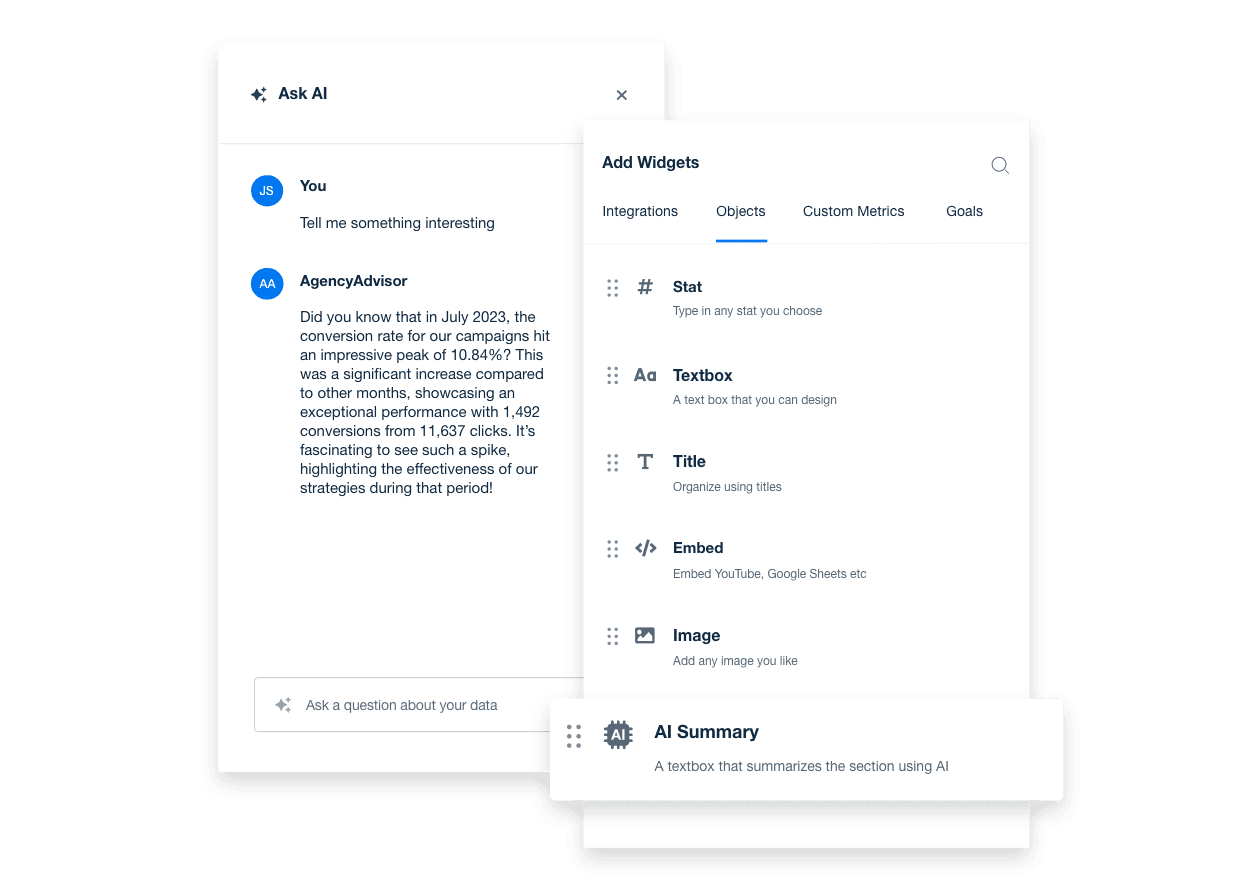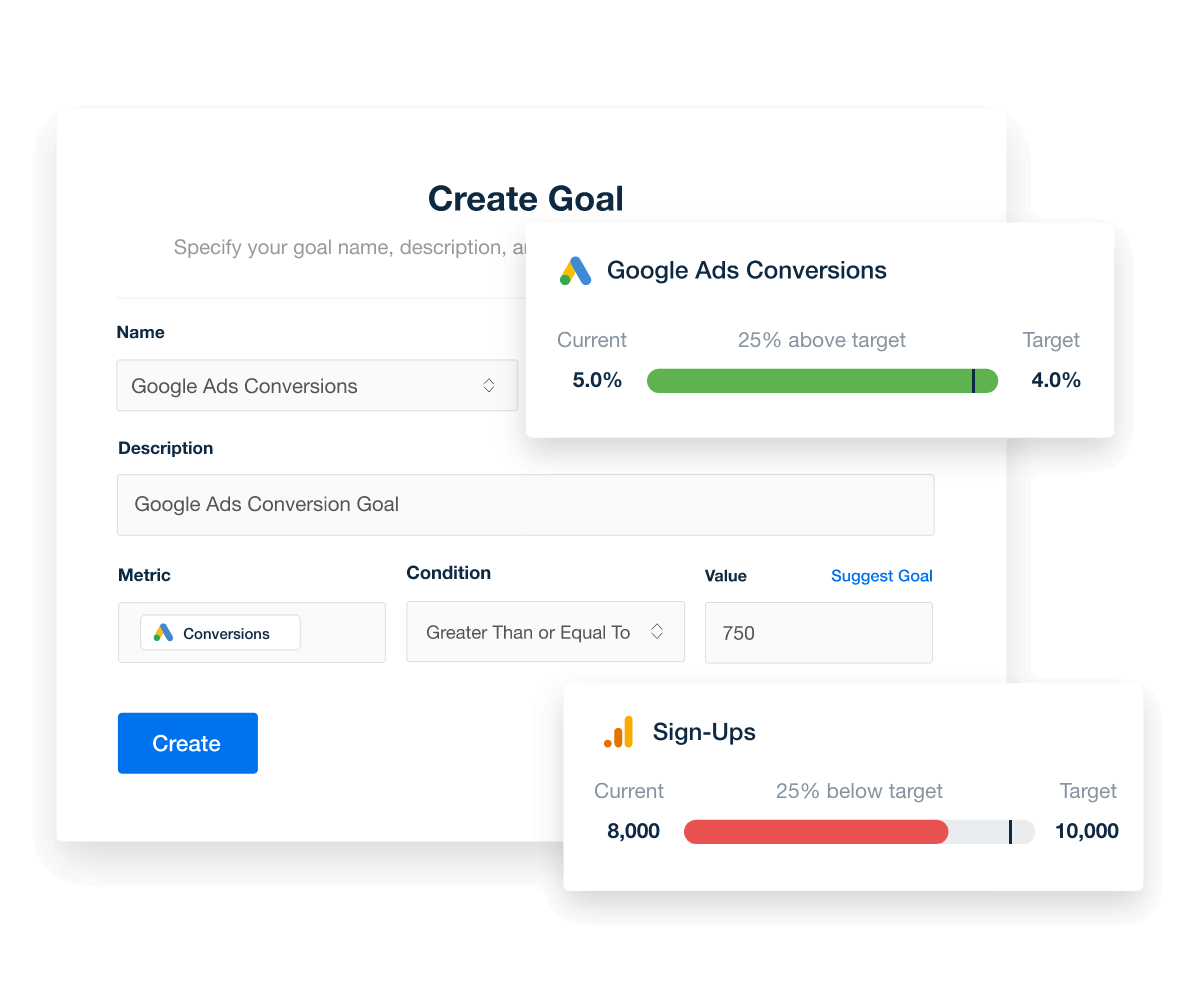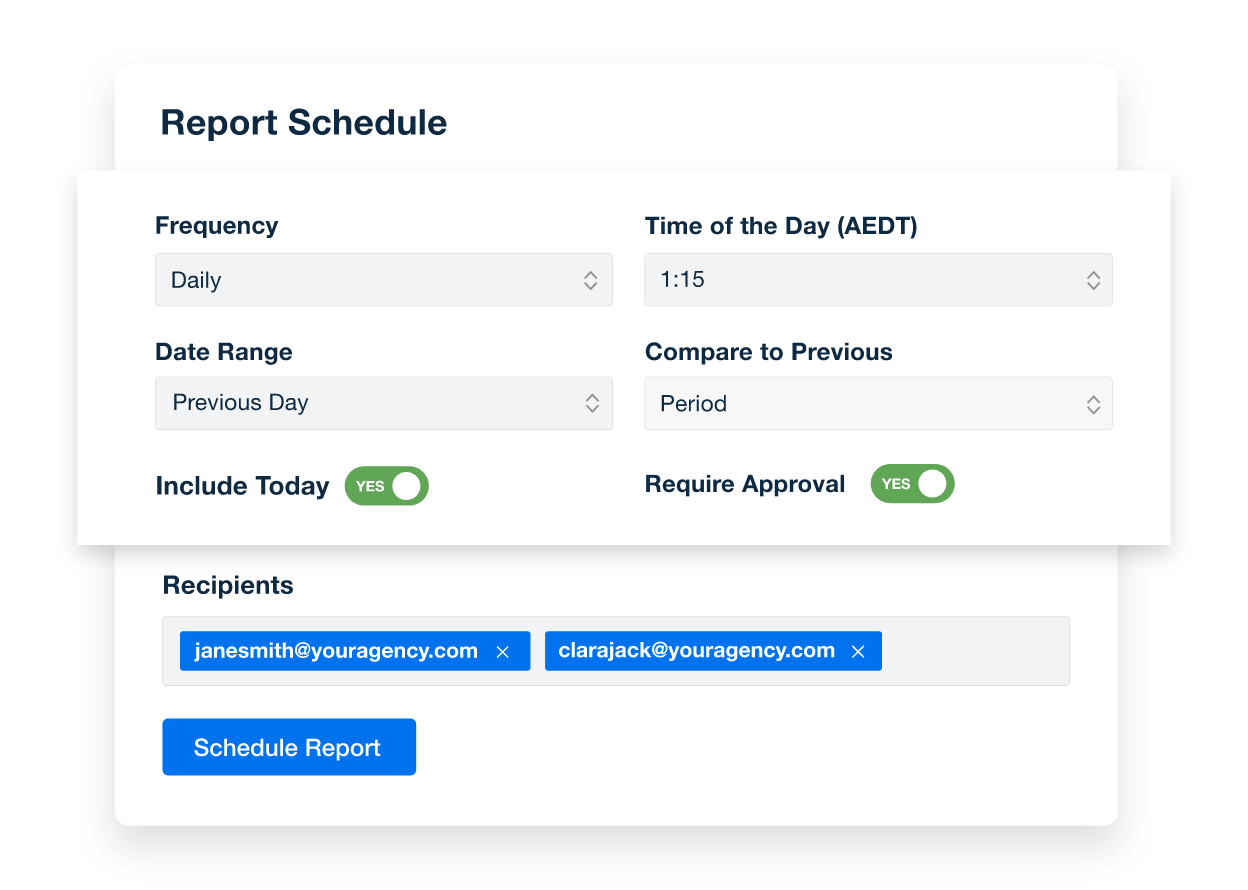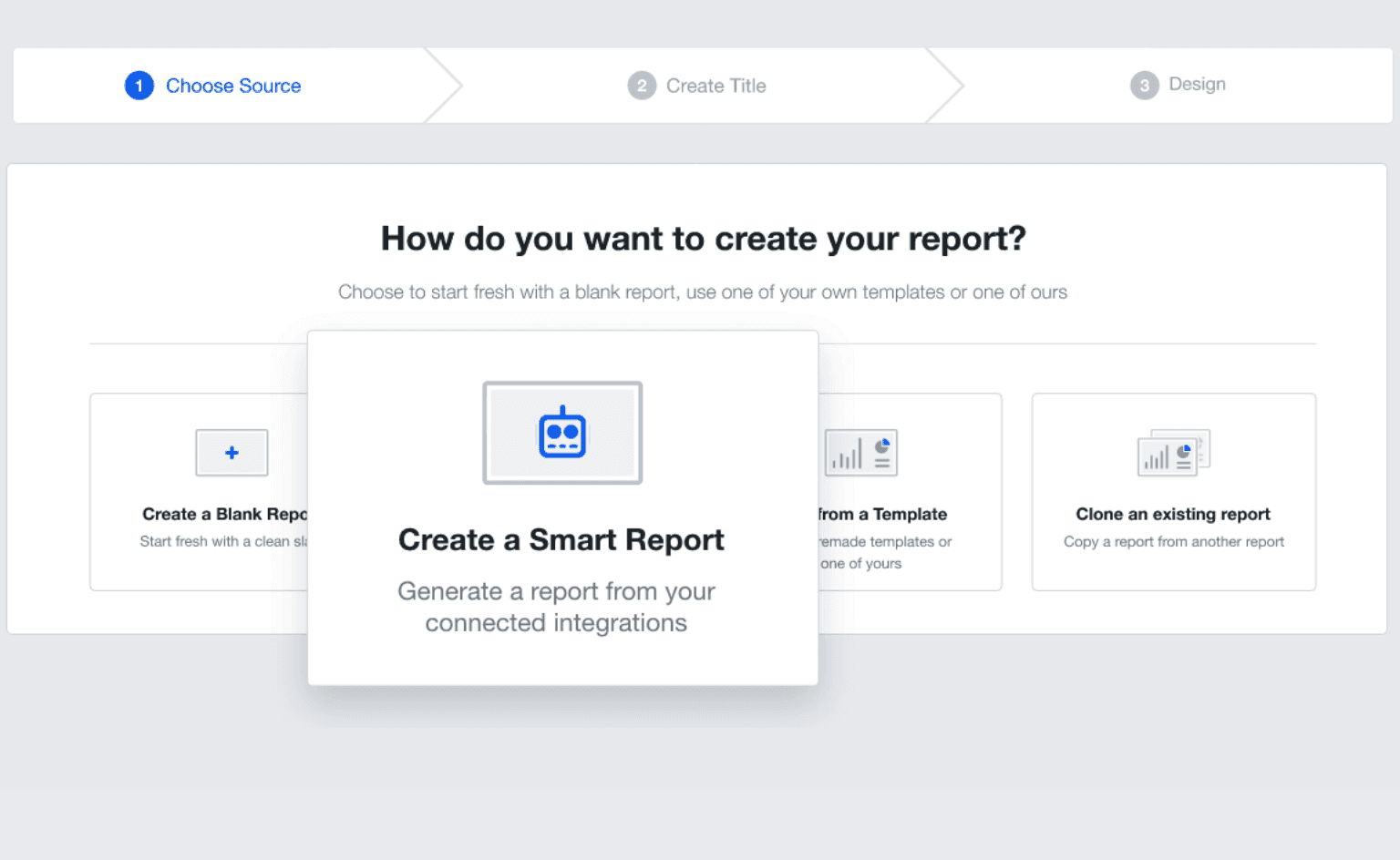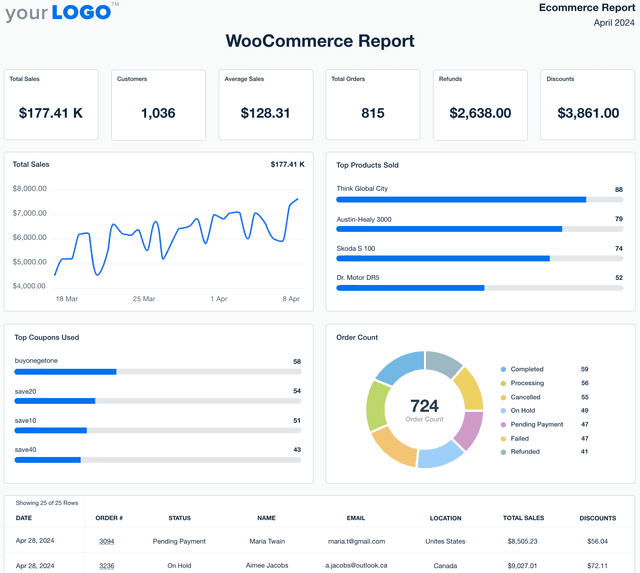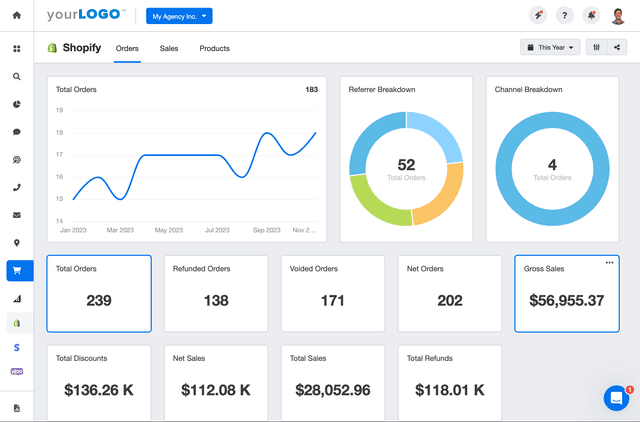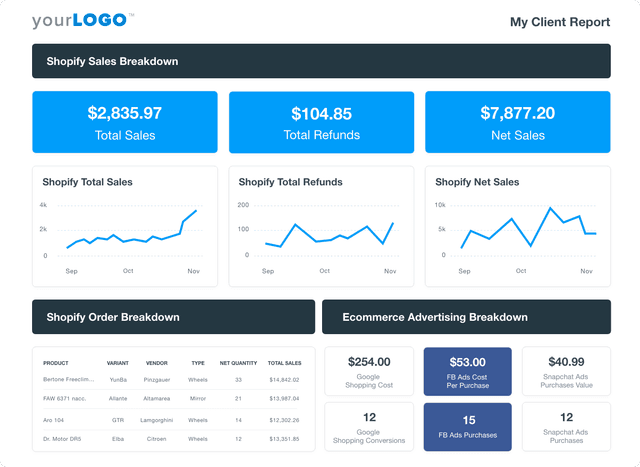Ecommerce Report Template for Clear, Actionable Insights
Customizable Ecommerce Report Templates That Prove Your Impact
Share polished, client-ready reports that clearly show how your agency drives ecommerce growth. Customize layouts, apply white-label branding, and tailor each report to highlight the KPIs that matter most—like revenue, ROAS, and conversion rates.
Templates connect to live data from 80 ecommerce and marketing platform integrations to eliminate manual work and reduce errors. Deliver consistent, transparent reporting that keeps clients informed and reinforces your agency’s role as a strategic partner.
Custom Ecommerce Reports as Unique as Your Agency
Create Ecommerce Reports in Minutes–Not Hours
Craft detailed ecommerce reports in a flash and let your team focus on higher-value tasks like strategy refinement and client interactions.
Respond to market changes, identify trends, and solve client needs faster.
Sign up for your free trial now!
No credit card required. No setup hassle. Just instant access to automated reporting, custom dashboards, and multi-channel insights.
11 Key Sections Included in the Ecommerce Report Template
Forget boring reports that go ignored. A professional and branded ecommerce report cover page captures attention, reinforces your agency's identity, and inspires confidence in your expertise at first glance.
Your cover page should clearly indicate the reporting period, specifying whether the data covers a monthly, quarterly, or specific campaign. This way, your clients immediately understand the timeframe of the insights and set clear expectations for the marketing report.
Save your designs as custom templates to ensure consistent quality across all client reports. This streamlines your workflow and maintains brand uniformity, saving you time and guaranteeing the ecommerce analytics reports you deliver all meet the same high standards.
Busy clients don't have time to sift through pages of data. An executive summary provides a concise overview of key findings and strategic recommendations. This section distills complex data into actionable insights, allowing busy stakeholders to grasp the most critical aspects of the report quickly.
An effective ecommerce report summary delivers clear, impactful insights. Here are some best practices to follow:
Prioritize Key Findings: Highlight the most significant data points and trends at the very beginning.
Be Concise: Use clear, straightforward language to ensure readability and ease of understanding.
Align With Objectives: Tailor the summary to reflect the specific goals and KPIs of the ecommerce campaign, ensuring relevance and utility.
Total sales quantifies the complete revenue an online store generates within a specified period. This metric shows the effectiveness of marketing campaigns and the overall health of an ecommerce business.
In ecommerce reporting, Total Sales offer a clear snapshot of business performance and directly reflect the success of ecommerce strategy and customer acquisition efforts. Agencies use this data to refine marketing campaigns and ensure alignment with the financial outcomes of their client's ecommerce platform (e.g., Shopify, WooCommerce, etc.).
Total Sales also interacts with other marketing channels and ecommerce data to provide a comprehensive view of where revenue originates and how it trends over time. Including this metric helps agencies assess customer lifetime value and predict future customer behavior.
Through effective data integration in customer relationship management systems (CRM), Total Sales informs decisions on inventory management, marketing channel adjustments, and strategic planning for an ecommerce business.
Net Sales represent the total revenue from sales minus returns, allowances, and discounts. This figure provides an assessment of an ecommerce business's profitability.
By including Net Sales in marketing reports, agencies deliver a realistic view of the financial outcomes of campaigns and the effectiveness of search engine optimization, promotions, and other marketing efforts in driving sales and profit.
Net Sales data also helps agencies optimize marketing campaigns by revealing the true revenue impact of each marketing strategy on the client's online store. This allows agencies to make targeted adjustments in marketing platforms and channels to improve client customer acquisition and retention.
Total Refunds measure the total amount reimbursed to customers for returned or unsatisfactory products. This customer data is crucial for assessing customer satisfaction and the return policy's impact on an ecommerce business.
Incorporating Total Refunds reveals the cost implications of returns and insights into potential issues with product quality or customer expectations.
Monitoring Total Refunds helps agencies advise their clients on refining product offerings, enhancing customer service, and improving the overall online shopping experience. Additionally, analyzing refund trends will guide adjustments in inventory reports and marketing strategies to reduce future refunds and increase customer satisfaction.
Sales by Channel breaks down revenue according to the different sales channels used in an ecommerce business. Depending on the business model, this includes marketing channels as well as the sales channels (such as Online or In-Store) where transactions occur. This helps identify which customer segments drive the most value and optimize marketing efforts accordingly.
Sales by Channel data is critical for assessing the performance of various platforms, from online store searches to other sales channels like marketplaces or social media. It helps agencies focus on the channels that yield the highest returns.
Understanding channel-specific sales data helps ensure that investment in advertising, search engine optimization, and customer engagement is directed toward the most profitable avenues. For clients, this boosts sales and improves customer acquisition and retention, contributing to business growth and long-term success.
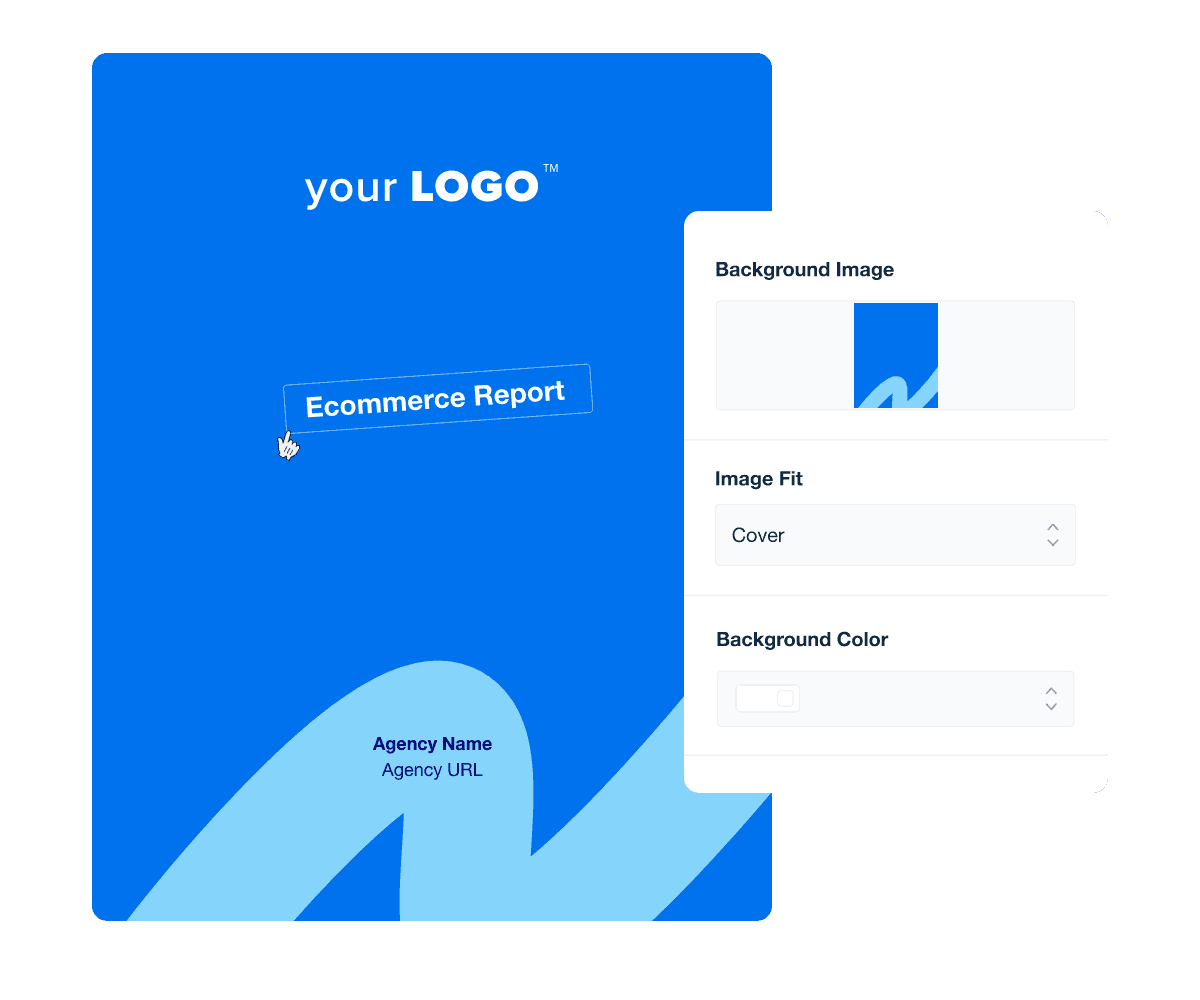
Build custom Ecommerce marketing reports that deliver results
Save time and impress clients with a powerful, results-driven report template. Access the free Ecommerce marketing report template today!
Products by Type categorize sales data according to different product categories or vendors within ecommerce businesses. This helps in understanding product performance and aligning inventory management with consumer preferences.
Understanding how different types of products contribute to overall sales helps craft targeted marketing campaigns that promote high-performing products more effectively and adjust strategies for underperforming categories.
Top Products Sold identifies the best-selling items in an ecommerce business, providing crucial data on what drives the majority of revenue.
Featuring Top Products Sold in ecommerce reports allows marketing agencies to spotlight the products that resonate most with customers. This data is key for crafting focused marketing campaigns that leverage these items’ popularity and success—to drive promotions, optimize search engine optimization efforts around these products, and create targeted content that increases visibility and sales.
Understanding which products top the sales charts helps in managing inventory more effectively and planning future product development. For clients, this ensures that marketing resources are invested in areas with the highest return on investment.
Average Order Value (AOV) calculates the average amount spent each time a customer places an order from an ecommerce business. This metric is crucial for understanding spending behavior and strategizing upsell opportunities.
By analyzing Average Order Value, agencies recommend specific tactics such as bundling products, offering upsells at checkout, or providing targeted promotions that encourage higher spending.
Effective management of AOV allows agencies to tailor their approach to attract customers and maximize the value of each transaction, which contributes to business growth and enhances Customer Lifetime Value (CLV) for clients.
Google Shopping Conversions track the number of successful purchases made through Google ads, showing how effective the channel is in driving sales for an ecommerce business.
Google Shopping Conversions data helps agencies evaluate the performance of these ads in real time to see the direct impact of their Google Shopping campaigns on sales. By analyzing conversion rates, agencies fine-tune ad placements, adjust bidding strategies, and optimize product listings to enhance visibility and attract more buyers.
Effective management of Google Shopping Conversions helps maximize advertising spend, improve return on investment, and ensure that marketing efforts directly contribute to the bottom line of the ecommerce business.
Facebook Ads purchases, Snapchat Ads purchases, Instagram Ads purchases, and TikTok Ads purchases count the number of transactions directly attributed to social media advertising.
Social shopping purchase metrics are vital for marketing agencies to measure social media’s effectiveness as a sales driver. These metrics provide clear insight into the success of social media campaigns in converting viewers into buyers. By monitoring purchases made through social media advertising, agencies optimize ad targeting, creative content, and spending to maximize conversion rates.
Analyzing these purchases helps refine social marketing strategies, ensuring ad investments convert into sales. Tailoring social campaigns based on social ads purchase data supports sales performance, long-term customer acquisition, and social engagement strategies.
